Bogotá has a lot to offer travelers, but sometimes it’s nice to escape the city and see a bit more of the country. When I visited Bogotá, I had one day for a day trip and debated which trip I would take as I couldn’t decide if I wanted nature or manmade beauty. I landed on a trip that took us to both Guatavita Lake and Zipaquirá for the famous Salt Cathedral. With an early morning pick up and a late night return, there is crammed a lot into this day trip. However, I feel like I got to see something different than had I just stayed in Bogotá and explored the museums.
In this post, I’ll tell you all about what to expect on a day trip to Guatavita and Zipaquirá.
About Guatavita Lake
At Guatavita Lake, you’ll visit stunning scenery. But what makes this place more interesting than any of the other beautiful places you can visit is that this is the basis for the famous Legend of El Dorado. When Spanish conquistadors arrived here, they found gold artifacts along this lagoon and got excited. So they started to excavate to take as much of the gold as they could.
However, the conquistadors decided to melt these artifacts down to make it easier to ship. It was then they realized that the gold they found was actually a mix of gold and other metals like platinum and copper. Learning this, they abandoned their plans at Guatavita and headed further south in the country. While these conquistadors pillaged other regions, it fortunately left this area to retain its beauty.
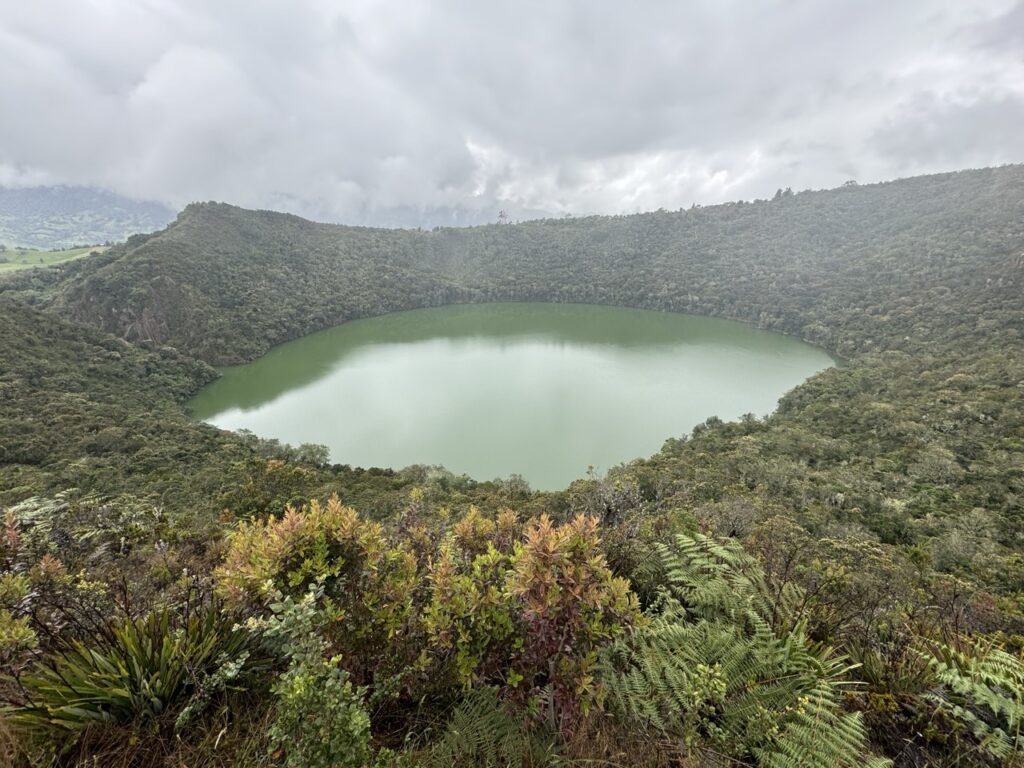
About Zipaquirá
Zipaquirá is famous for its Salt Cathedral and it’s the first of the Seven Wonders of Colombia. The cathedral was carved out of an active salt mine by miners who had finished their shifts. Inside the cathedral, you’ll follow the Stations of the Cross as you work your way deeper into the mine until you reach the nave and the main part of the cathedral where masses are held.
Throughout the cathedral, remember how you are dozens of meters underground. Everything around you was carved by the miners. While I’ve certainly been to more over the top cathedrals, there is something incredibly unique about this underground salt cathedral.
Should You Do a Guided Tour?
I did my day trip with a guided tour. If you’re visiting this much in one day, it just makes sense because they’ll be able to handle all of the logistics and transportation. Yes, it’s not a cheap day tour (nearly 400,000 COP), but having the transportation taken care of is excellent. It won’t be possible to do both Guatavita Lake and Zipaquirá in one day without a guided tour.
If you don’t want to do a guided day tour, you’ll want to pick one of these places. Specifically, you’ll want to pick Zipaquirá which can be reached by public transportation (and a taxi to the actual Salt Cathedral). And while I’m sure you can find a bus to Guatavita, this is much less independently traveled.
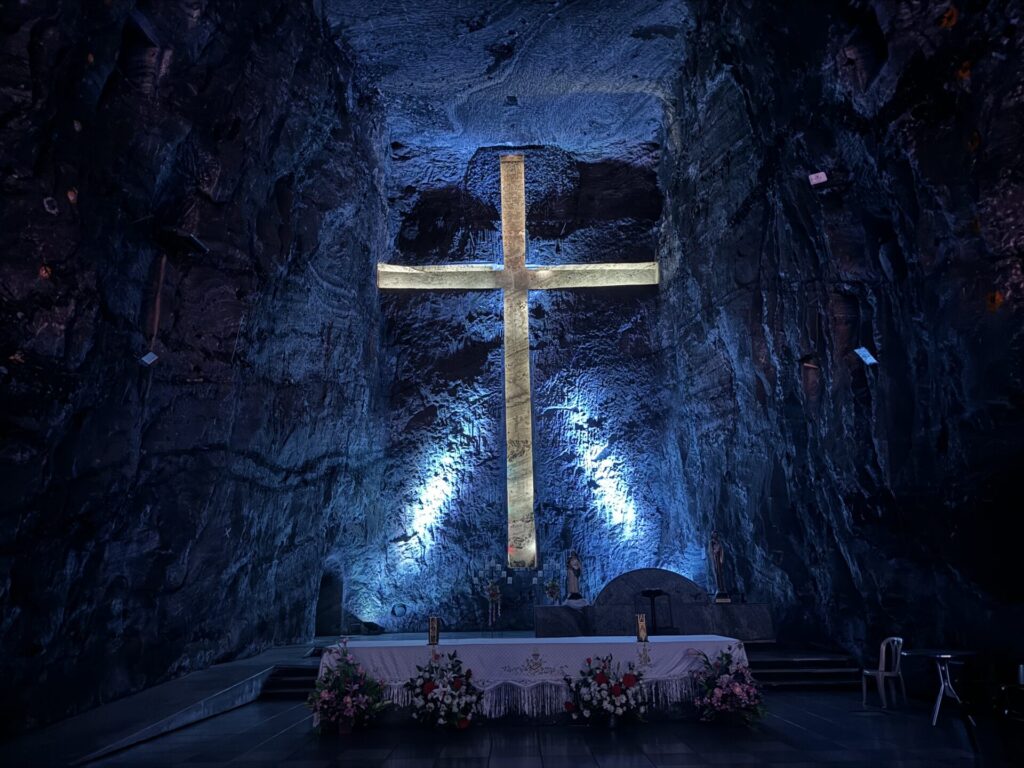
A Day Trip to Guatavita Lake and Zipaquirá
Ok, let’s finally get into the details and look at what a day trip to Guatavita Lake and Zipaquirá looks like.
Pick Up/Meet Up
Depending on your tour company, you’ll either be picked up at your hotel or you’ll need to meet at a central location. If you need to meet at a specific location, be sure to be there on time. If you get picked up at your hotel, this is taken care of for you.
My tour company picked me up at my hotel, so that was something I didn’t have to worry about. They texted me the night before with an estimated pick up time, which was nice. However, I had a long travel day and went to bed early. After I put my phone away, I received another text saying the time had changed and I didn’t see it until I got up in the morning. Thankfully I woke up early enough and had about 15 minutes to get ready before my tour came, but that wasn’t ideal.
I think you can take a lesson from my experience though. If you are staying in La Candelaria, expect to meet up with your group or be picked up at about 7:00 am. I was told 8:00 am, which I thought was really late based on information I had found online, but I didn’t question it. I should have questioned it because the pick up time was actually 7:00 am.
Guatavita Lake and Zipaquirá are located northeast of Bogotá so the further away you are, the earlier you’ll need to be ready. For La Candelaria, expect 7:00 am. For Chaperno, Parque 93, and other neighborhoods, it may be later. But in general expect to leave your accommodation between 7:00 and 8:00 am. The further away you are from the Bogotá’s north bus terminal, the earlier you’ll be picked up.
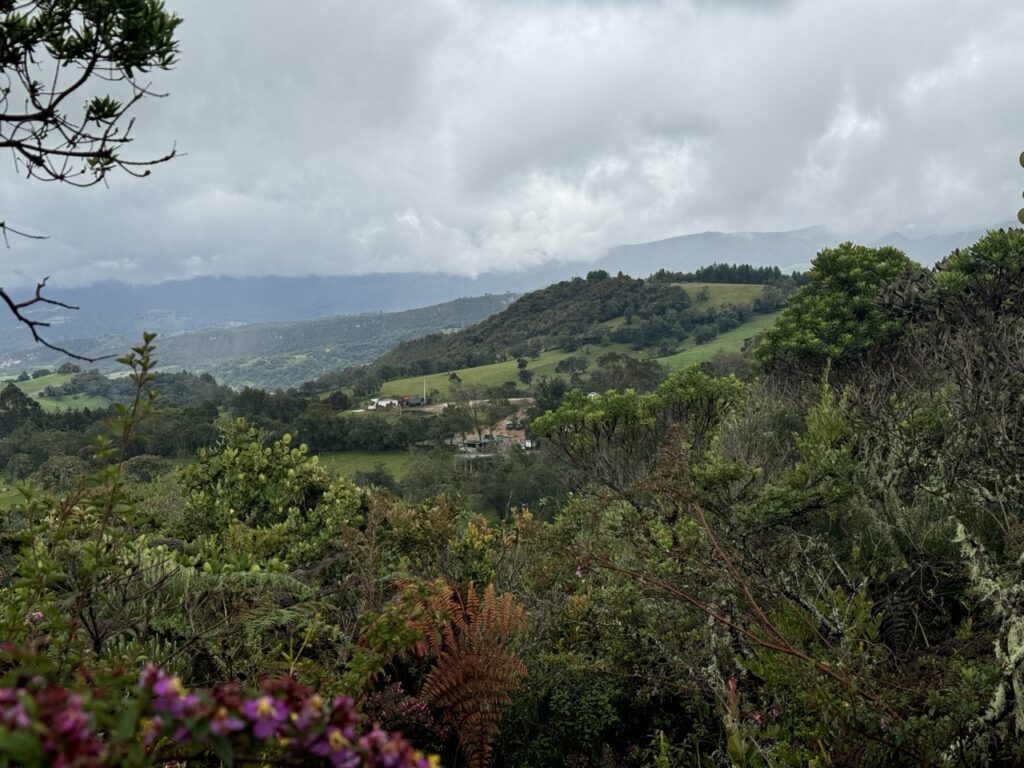
The Tour Begins
From the northern side of Bogotá, it takes about two hours to get to Guatavita. That’s plenty of time to get a little insight into what you’ll be seeing today. My tour was bilingual and our guide did the entire 30 minute talk in Spanish before switching and giving the entire 30 minute talk again in English.
He told us about the history of Guatavita, interesting facts about Colombia, and general information for our day. All the while, we made our way out of the city into a more scenic part of the country.
Arrival at Guatavita Lake
At Guatavita Lake, you’ll get off the bus. This is your first stop and here’s where things can get interesting. Guatavita Lake is located in an ecological park and you’ll need to go on a guided walk to the various viewpoints. The park provides guides, but they are all Spanish speaking.
In my tour group, we were split on language preference. About eight tour members spoke Spanish while the other eight didn’t. So our tour guide split our group into Spanish speakers and non-Spanish speakers.
He sent the Spanish speakers with the guide from the park and led the rest of us on our own mini English tour. This turned out great because the Spanish group had 30 to 40 people. Our little group was much smaller which was just more pleasant. We got much of the same information, although it could be argued that we received less. Our English tour finished before the Spanish tour, but our guide told us that there’s a large focus on indigenous language which he can’t do. I’m happy with all of the information that we got on our tour, so I have no complaints that ours was technically shorter than the Spanish tour.
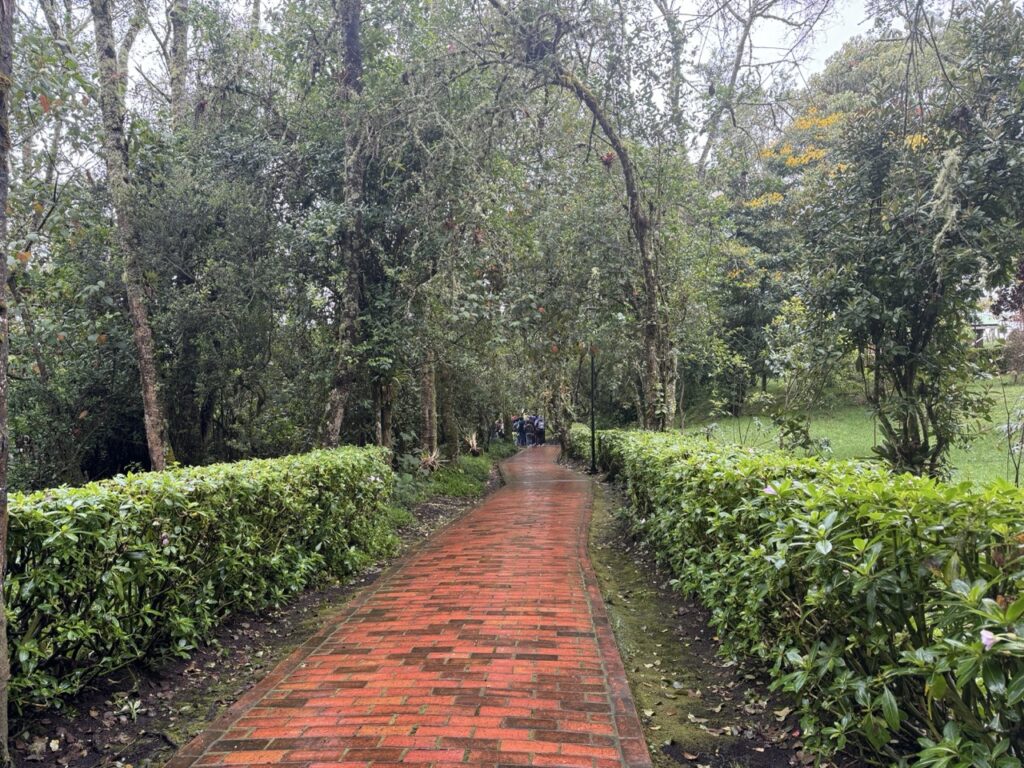
Touring Guatavita Lake
As mentioned, you’ll have to tour the ecological park with a tour guide. So what do you actually see?
It’s an ecological park, so expect to see plenty of fruit trees and plants that you’ve never seen before. Your guide will point out these plants and explain how every single one seems to be used for medicinal purposes. You’ll also see a structure that’s similar to what the native people of this area would have lived in.
But of course, the highlight is the lagoon at Guatavita, which is the birthplace of the legend of El Dorado. You’ll hike up to the rim and walk a small section around it. This hike is not technical and it’s doable for most people, even though you’ll hike up a lot of stairs.
For me, the hardest part wasn’t the stairs, it was the elevation. You’ll be over 8,000 feet above sea level and if you aren’t used to the elevation, don’t be surprised if you huff and puff up what you think should be easy stairs. I live at sea level and it was only my second full day in Colombia. I was still acclimating and definitely panted way harder than I would like to admit as I climbed the steps to the rim of the lagoon.
Unfortunately for me, it was raining on the day I visited so the pictures don’t look as nice as what you might find elsewhere online. Even through the rain though, the area was beautiful.
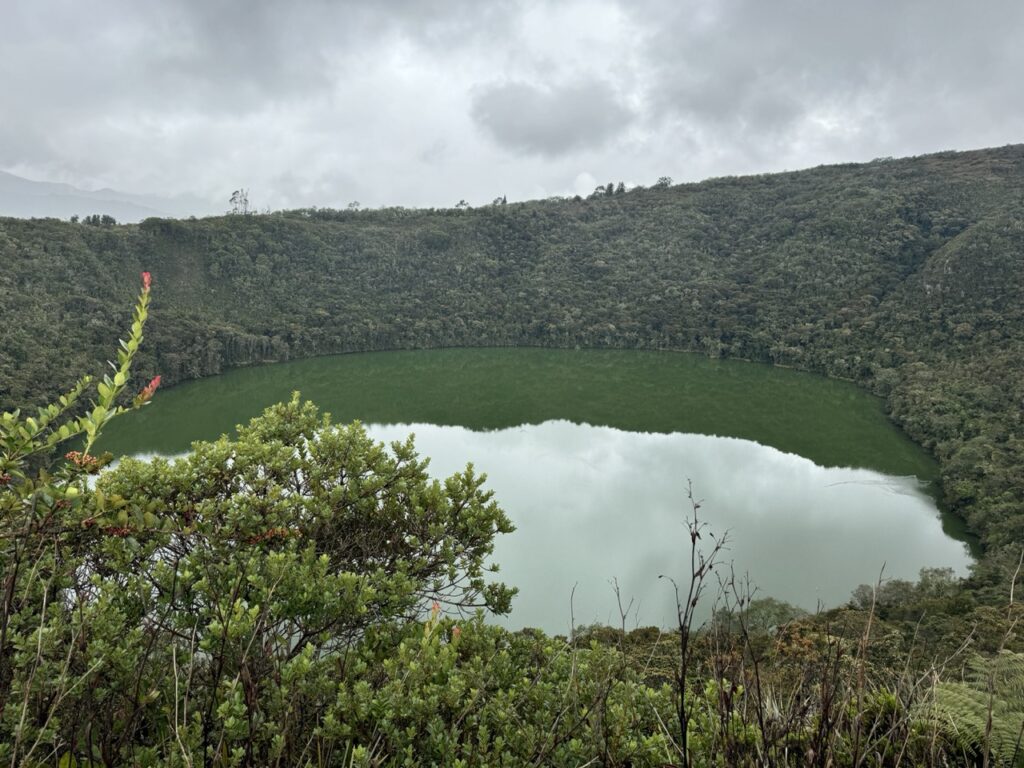
A Brief Snack Stop
Your driver will pick you up in a different location from where you were dropped off. This means that once you leave the main view point, you’ll hike down to a different trail. This is good though because at the end of the trail, there’s a small restaurant where you can get a snack. The highlight for many is the fresh arepas (for only 4,000 COP). These arepas are so fresh that they are still hot (they’re being made right in front of you) and I can safely say it was tied for the best arepa I had in Colombia. There is also sausage, tea, and other snacks.
Since our group was split into groups (Spanish speakers versus non-Spanish speakers), one group finished before the other, so we had a little bit of extra time for our snack.
Once everyone has had a chance to eat, you’ll board your bus and head onto the next stop at Zipaquirá.
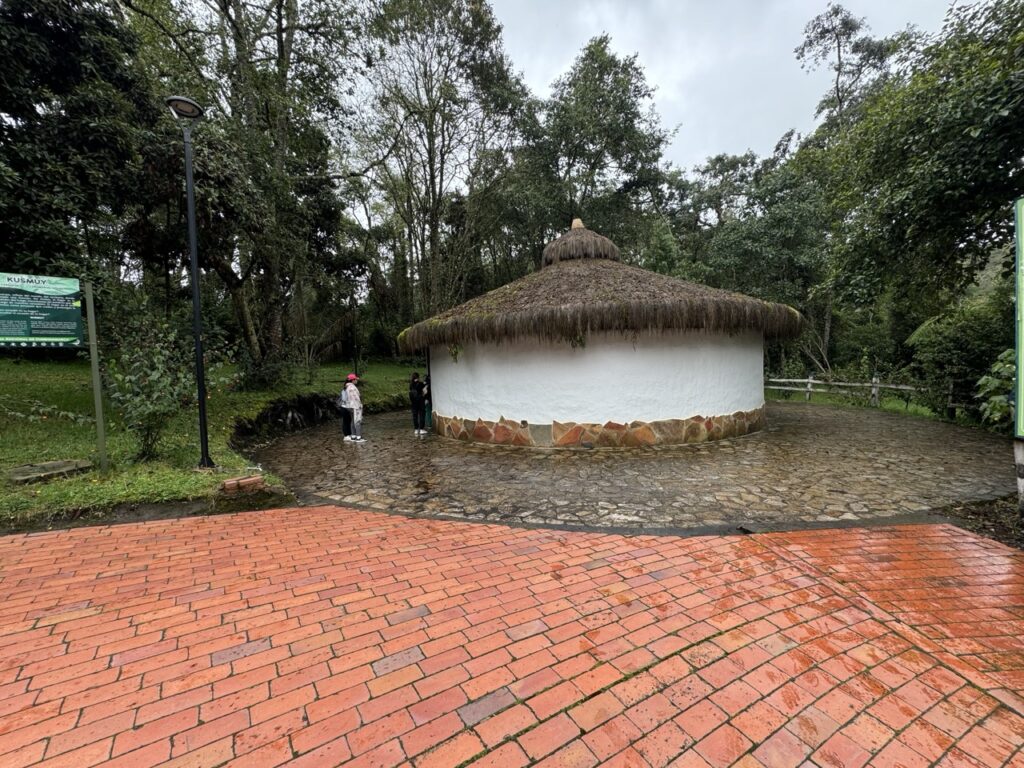
Lunch in Zipaquirá
While the highlight of Zipaquirá is the Salt Cathedral, lunch is also important and that stop is first.
But Kristen, didn’t you just stop at a restaurant at Guatavita Lake? Yes, there was a restaurant at Guatavita Lake, but it was more snacks than an actual meal. Plus, you’ll have an hour drive from Guatavita to the city center of Zipaquirá. By the time you arrive in Zipaquirá, it will definitely be time for a proper meal.
We were all brought to the same restaurant. It was a pricier restaurant than I would have picked myself, but the food was good and since the meal was only $12 USD, I can’t complain too much.
As a note, the menu was entirely in Spanish, but our guide was there to help anyone who needed some translation.
As one final note, the portions were huge. I don’t know if you’ll end up at the same restaurant we did, but at La Carreta, portions were huge and most people in our group couldn’t finish their entire plate.
A Walking Tour of Zipaquirá
After lunch, your guide will give you a “walking tour” of Zipaquirá. Don’t get too excited because this is not a big excursion. We walked from our restaurant to the main square. Then we walked a short distance to our van so we could drive to the Salt Cathedral.
Yes, it is nice to see a bit of the city of Zipaquirá, but when I heard our guide say we would be doing a “walking tour”, I had a much different vision in my head. But I will say it was nice to stop by the main square and get a few photos.
The cathedral also sits on the main square, but it’s unlikely to be open. Our guide said we got “lucky”. The cathedral doors were open (due to a funeral), so we could take a quick peak inside. I wish I would have been able to step inside and properly see this cathedral because it looks so different than most.
Almost as soon as your walking tour starts, it’s over and you’ll be in the van to your final stop of the tour.
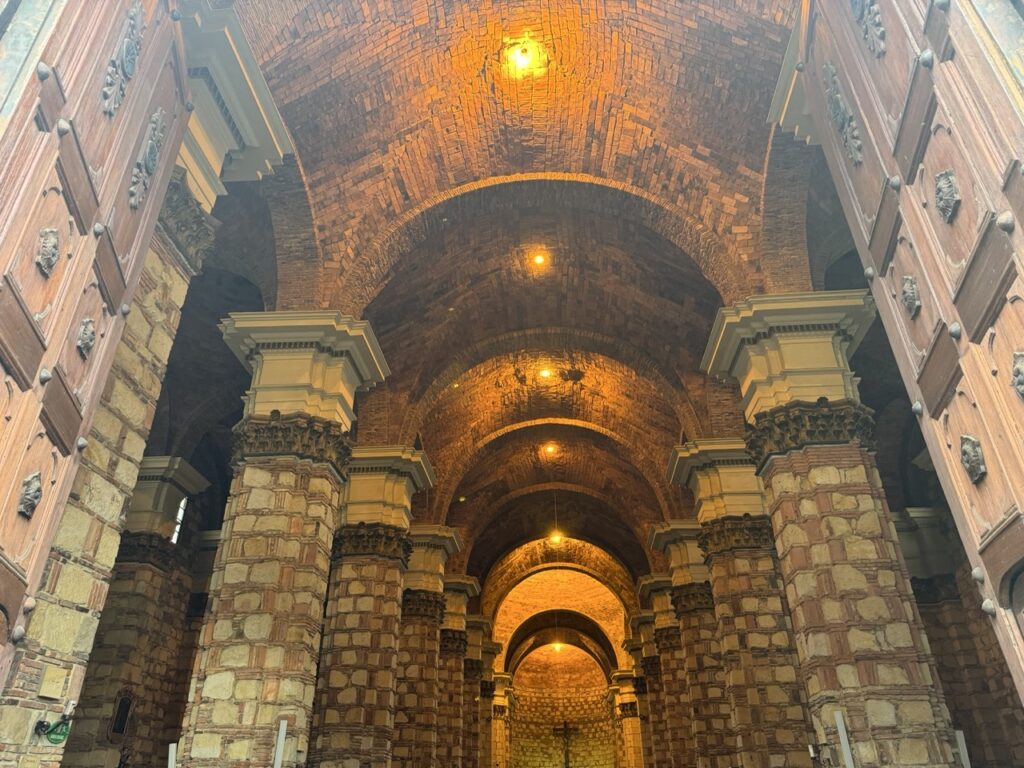
Zipaquirá Salt Cathedral
Zipaquriá is the first of the seven wonders of Colombia. Given its close proximity to Bogotá, many people visit as a day trip. I don’t want to say it was crowded, but there were a lot of people there.
Again, our group broke off into two. The non Spanish speakers were given an audio guide to lead us into the salt mines and through the cathedral. The Spanish speakers did not get an audio guide and were instead told to join the provided Spanish tour provided by the Salt Cathedral.
Quite frankly, I think it paid to be a non-Spanish speaker. I was able to go at my own pace and that meant that I could go around the large group of Spanish speakers. As I talked to a bilingual member of our tour after, it seems like we got the same information, but even she said the big group was too much.
As you enter the cathedral, you’ll work your way down through the Stations of the Cross. Your audio guide will explain the symbolism in each station, since each station is a bit more abstract than what you may be used to seeing with Stations of the Cross. Eventually you’ll enter the nave and the main part of the cathedral. Take in the vastness of the space and remember you’re well over 100 meters underground and all of this was dug by dedicated miners.
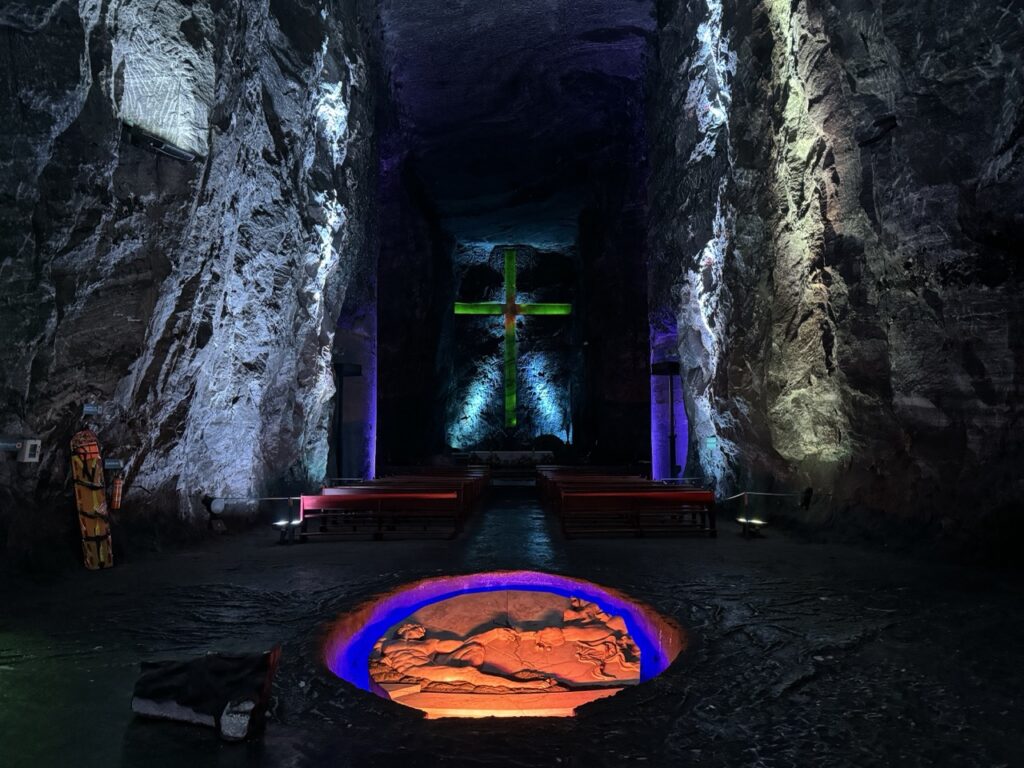
Underground, there’s more than just the cathedral. There are more shopping opportunities than I expected. They sold everything from snacks to souvenirs to emeralds. There’s also a cinema that plays a twenty minute film about the history of mining in Colombia. The film is in Spanish but there are English subtitles. The film is fine, but I wouldn’t have been that upset had I missed it (we had time before we needed to be back at the bus, so a few of the people on my tour decided to stop).
To exit the Salt Cathedral, you have two options. Option one is to retrace your steps and head out the way you came. Since we did this tour later in the afternoon, it meant that few, if any, visitors were being allowed in meaning we could stop at some of the Stations of the Cross for a photo without any people. The second option is to take the train/bus out. I chose to walk out since it really isn’t a strenuous walk.
Back to Bogotá
After the Salt Cathedral, it’s time to van for the journey back to Bogotá. Depending on where you are staying in Bogotá, the traffic, and who else is on your tour, it could take anywhere from one to three hours to get back to your hotel.
Where to Book Your Tour
You have a couple options. The easiest to book on GetYourGuide. You can also book directly with a tour company (I used Beyond Colombia Tours) or through your hotel.
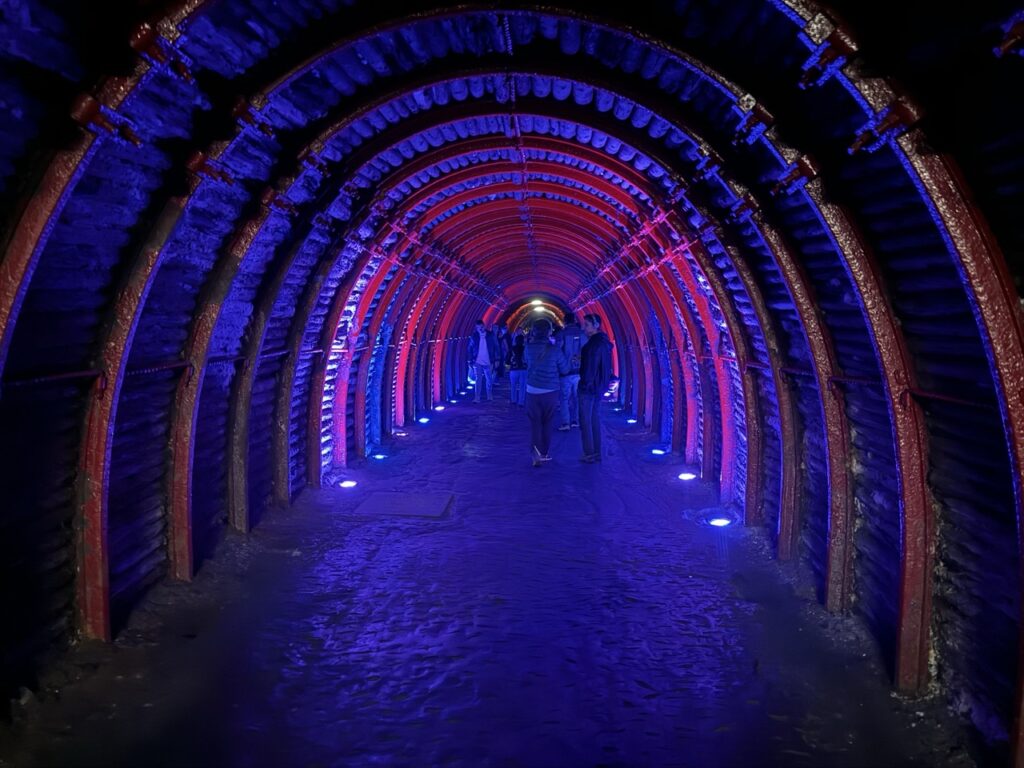
Is a Guatavita and Zipaquirá Tour Worth It?
I think a day trip to Guatavita Lake and Zipaquirá is worth it, especially if you’re only planning on exploring Bogotá and the big cities like Medellin and Cartagena. There is so much more to Colombia than the big cities and I think this tour helps to give you a taste of it.
Now that said, it’s a very long day with a lot of transportation (and traffic). I didn’t mind that, but I know not everyone does.
Is the Tour in English?
Yes! My guide was fully bilingual and gave all of his speeches in Spanish and English. I did get nervous in the beginning as our guide only seemed to be giving the tour in Spanish. But his method was to do all thirty minutes in Spanish and then all thirty minutes in English rather than switching back and forth more frequently.
Compare that to my tour of El Cajon del Maipo in Chile which was advertised as English but was only spoken in Spanish, I was very happy.
More in Bogotá
Bogotá is a massive city and there is a lot to do. There are so many museums (the Museo del Oro being the most popular) plus you could hike to Monseratte for a fantastic view of the city. For more, check out my guide to how to spend one day in Bogotá.
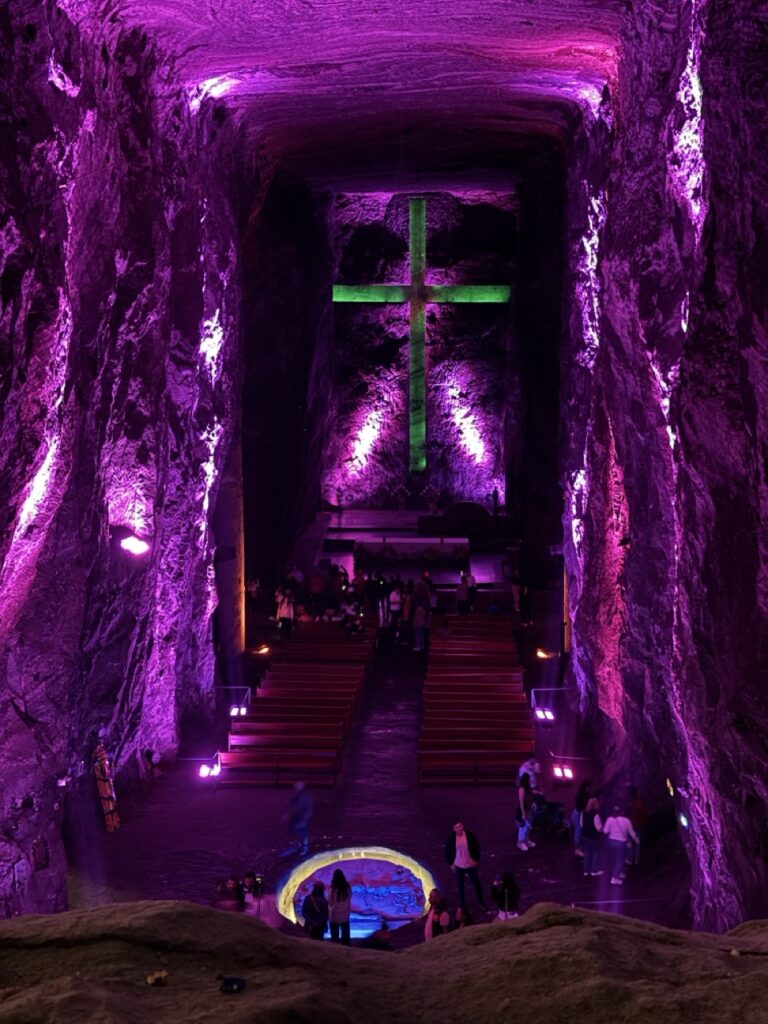
General Tips for the Day
This is a long day and it’s good to be prepared. If you’re staying in La Candelaria, expect to be picked up early and be back late. Pack some snacks and water because you just never know. Also make sure to budget money for lunch as that is not included in your tour price.
When to Visit Colombia
While many countries have weather that can change drastically throughout the year, Colombia has just two season: dry season and rainy season.
Dry season is more popular because rain is less likely. Dry season typically runs from December through February or March. Then there is another dry season from June through August.
Rainy season comprises of the other months of the year. April and May and September through November. While it is rainy season, it may not rain every day, but you need to be prepared that it could rain at any time. Learn more about visiting during rainy season.
While dry season, particularly December through February, is the most popular time to travel, I chose to visit in November. It was rainy season and it did rain every day of my visit. However, the rain typically did not occur until the late afternoon or evening, meaning on most days my mornings were dry and I was able to explore in the dry sunshine.
Final Thoughts
For an escape from the large city of Bogotá, consider a day trip to Guatavita Lake and Zipaquirá. See some spectacular scenery and visit one of the seven wonders of Colombia.
Continue Your Adventure
More in Bogotá: Plan to spend one day in Bogotá to see the highlights. This includes spending some time at Bogotá’s best view at Monseratte.
Colombia: Start your trip planning with my Colombia Travel Guide, which features a 9 day itinerary, plenty of safety tips, and a realistic travel budget.
